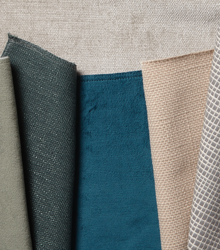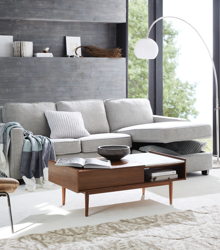Living Room
Guide To Leather Furniture
Soft and luxe, extremely durable and long–lasting, and more affordable than you might think, leather furniture adds warmth and richness to any room. Here's what you need to know about choosing and living with leather.


What to Know About Leather
- Leather sofas and chairs tend to last at least 3 times longer than fabric (and often last a lifetime!), so they're a very worthwhile investment.
- Leather quickly adjusts to your body temperature, so it won't feel too cold in winter or hot in summer.
- Leather seat cushions are not reversible. Because leather doesn't breathe, the undersides of leather cushions are made with a breathable mesh fabric so air can escape when you sit down. You should, however, rotate cushions regularly for more even wear.

Types of Leather + Finishes
- The hides we use are all top–grain, which is the finest and strongest part of the hide.
- Most of our furniture is full aniline leather. Only the top 5% of all hides can be made into aniline leather. This soft, supple leather shows the natural grain and variations of the original hide and will show markings and wear, which develop into a rich patina over time. If you prefer a more even, uniform finish, choose semi-aniline or pigment-dyed.
- Semi–aniline leather is aniline–dyed and then treated with a light protective top coat so it is somewhat protected against stains and fading. It has a more uniform finish but still has highs and lows and richness of color.
- Pigment–dyed leather is usually buffed or sanded to remove imperfections in the hide and create uniform coloring. It has a heavier protective topcoat so it's not quite as soft, but it is the most durable and cleanable leather, ideal for families.

How to Care for Leather Furniture
- Try to keep leather furniture out of direct sunlight, which will cause it to fade over time (unless you're going for that well–aged look). Also keep leather away from heating vents or a fireplace, which can cause drying and cracking.
- Dust or vacuum with the soft brush attachment and buff regularly with a clean, dry cloth.
- If a spill occurs, immediately soak up any liquids with an absorbent cloth. If necessary, gently dab (don't rub) with a cloth dampened (don't soak) with distilled water. Do not use water to wash butter, oil or grease stains. These spots will be absorbed into the leather over time.
- To protect and maintain leather, you may want to use a leather conditioner; always test on a hidden area first. Only use products specifically intended for leather.
- If your leather gets damaged, contact a local leather professional to repair it.


